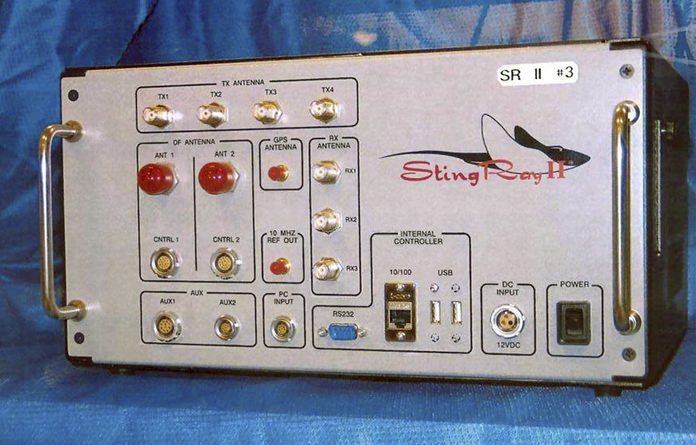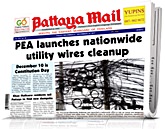
New York (AP) – New York City, Los Angeles, Chicago and Las Vegas are among scores of police departments across the country quietly using a highly secretive technology developed for the military that can track the whereabouts of suspects by using the signals constantly emitted by their cellphones.
 Civil liberties and privacy groups are increasingly raising objections to the suitcase-sized devices known as StingRays or cell site simulators that can sweep up cellphone data from an entire neighborhood by mimicking cell towers. Police can determine the location of a phone without the user even making a call or sending a text message. Some versions of the technology can even intercept texts and calls, or pull information stored on the phones.
Civil liberties and privacy groups are increasingly raising objections to the suitcase-sized devices known as StingRays or cell site simulators that can sweep up cellphone data from an entire neighborhood by mimicking cell towers. Police can determine the location of a phone without the user even making a call or sending a text message. Some versions of the technology can even intercept texts and calls, or pull information stored on the phones.
Part of the problem, privacy experts say, is the devices can also collect data from anyone within a small radius of the person being tracked. And law enforcement goes to great lengths to conceal usage, in some cases, offering plea deals rather than divulging details on the StingRay.
“We can’t even tell how frequently they’re being used,” said attorney Jerome Greco, of the Legal Aid Society, which recently succeeded in blocking evidence collected with the device in a New York City murder case. “It makes it very difficult.”
At least 72 state and local law enforcement departments in 24 states plus 13 federal agencies use the devices, but further details are hard to come by because the departments that use them must take the unusual step of signing nondisclosure agreements overseen by the FBI.
An FBI spokeswoman said the agreements, which often involve the Harris Corporation, a defense contractor that makes the devices, are intended to prevent the release of sensitive law enforcement information to the general public. But the agreements don’t prevent an officer from telling prosecutors the technology was used in a case.
In New York, use of the technology was virtually unknown to the public until last year when the New York Civil Liberties Union forced the disclosure of records showing the NYPD used the devices more than 1,000 times since 2008. That included cases in which the technology helped catch suspects in kidnappings, rapes, robberies, assaults and murders. It has even helped find missing people.
But privacy experts say such gains come at too high a cost.
“We have a Fourth Amendment to the Constitution,” said Jennifer Lynch, an attorney with the Electronic Frontier Foundation, referring to the protection against unreasonable search and seizure. “Our Founding Fathers decided when they wrote the Bill of Rights there had to be limits placed on government.”
Lawmakers in several states have introduced proposals ranging from warrant requirements to an outright ban on the technology; about a dozen states already have laws requiring warrants. Federal law enforcement said last year that it would be routinely required to get a search warrant before using the technology – a first effort to create a uniform legal standard for federal authorities.
And case law is slowly building. Two months ago, a Washington, D.C., appeals court overturned a conviction on a sex assault after judges ruled a violation of the Fourth Amendment because of evidence improperly collected from the simulator without a proper warrant.
In the New York murder case argued by the Legal Aid Society, a judge in Brooklyn last month ruled that the NYPD must have an eavesdropping warrant signed by a judge to use the device, a much higher bar than the “reasonable suspicion” standard that had previously been required.
“By its very nature, then, the use of a cell site simulator intrudes upon an individual’s reasonable expectation of privacy, acting as an instrument of eavesdropping and requires a separate warrant supported by probable cause,” wrote state Supreme Court Judge Martin Murphy.
New York City police officials disagreed with the ruling and disputed that a StingRay was even used in the case, even though there had been a court order to do so. Police officials also said they have since started requiring a higher stander of probable cause when applying for the devices.
Legal Aid Society’s Greco said he hoped the ruling will push the nation’s largest department into meeting the higher standard, and help judges better understand the intricacies of more cutting-edge surveillance.
“We’re hoping we can use this decision among other decisions being made across the country to show that this logic is right,” Greco said. “Part of an issue we’re facing with technology, the judges don’t understand it. It makes it easier if another judge has sat down and really thought about it.”





